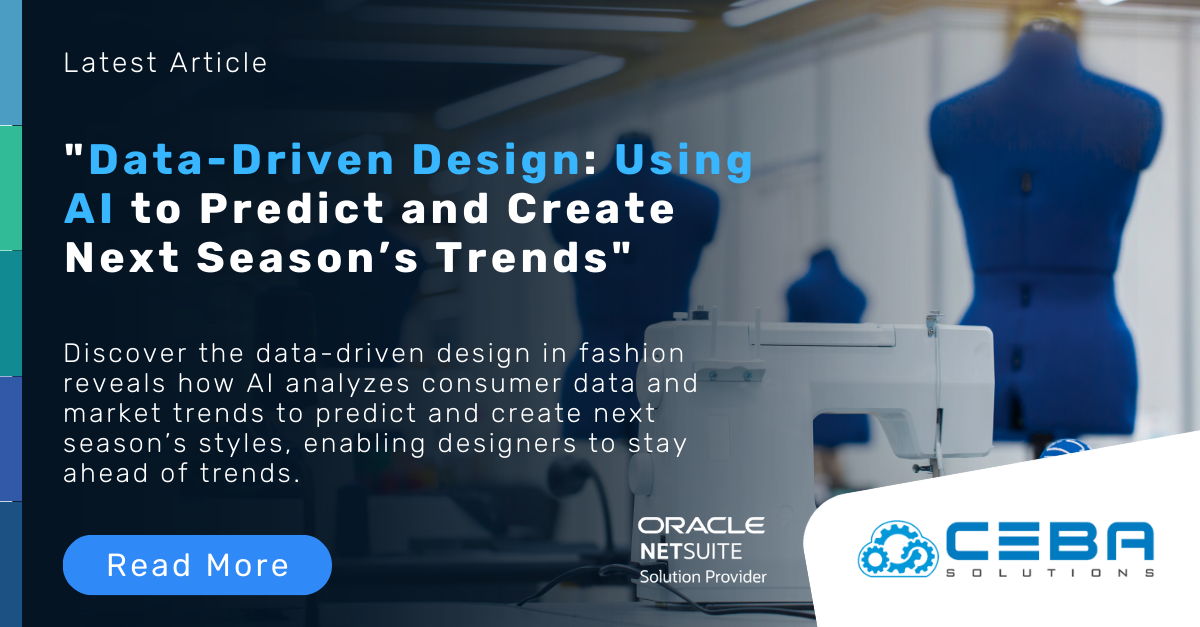
Predictive Analytics in Fashion: Forecasting Trends and Optimizing Inventory
Predictive Analytics in Fashion: Forecasting Trends and Optimizing Inventory
Predictive analytics is transforming the fashion industry by empowering brands to anticipate market trends and manage inventory with unprecedented precision. This data-driven approach leverages historical sales data, consumer behavior patterns, and broader market trends to forecast future demand, allowing fashion retailers to stay ahead of the curve. This article explores how predictive analytics is being utilized to forecast fashion trends and optimize inventory, ensuring that brands can meet consumer demands efficiently and effectively.
1. Trend Forecasting
Predictive analytics tools analyze vast amounts of data from various sources, including social media, online searches, past purchases, and even weather forecasts, to identify emerging fashion trends. By predicting what styles, colors, and products are likely to be popular in upcoming seasons, brands can tailor their designs to fit the anticipated market demand.
Benefits:
- Proactive Design Strategy: Allows designers to create collections that align with predicted consumer preferences, increasing the likelihood of successful product launches. By staying ahead of trends, brands can ensure that their offerings are always relevant and appealing to their target audience.
- Market Responsiveness: Brands can quickly adapt to changes in consumer tastes and stay competitive in the fast-paced fashion industry. This agility is crucial for maintaining a competitive edge and responding to real-time market dynamics.
Real-World Application:
Fashion companies like Burberry and H&M utilize predictive analytics to monitor social media trends and consumer behavior. This enables them to identify emerging trends early and incorporate them into their collections, ensuring that they remain at the forefront of fashion innovation.
2. Inventory Optimization
By accurately forecasting demand, predictive analytics helps fashion retailers determine the optimal quantity of each product to stock. This precision prevents both overstock and understock situations, reducing the risk of unsold inventory and missed sales opportunities.
Benefits:
- Reduced Carrying Costs: Proper inventory levels minimize the costs associated with storing unsold goods. Efficient inventory management reduces warehousing expenses and the financial burden of excess stock.
- Increased Sales Potential: Adequate stock levels ensure that customer demand is met without the risk of stockouts, maximizing sales opportunities. This balance enhances customer satisfaction and loyalty by providing consistent product availability.
Real-World Application:
Retail giants like Zara employ predictive analytics to optimize their inventory. By analyzing sales data and market trends, they can maintain optimal stock levels, reducing waste and ensuring that popular items are always available to customers.
3. Dynamic Pricing
Predictive analytics also enables dynamic pricing strategies by assessing demand trends, competitor pricing, and inventory levels in real-time. This approach allows fashion retailers to adjust prices dynamically to maximize profits, clear out inventory, or respond to competitive pressures.
Benefits:
- Profit Maximization: Optimal pricing strategies enhance profitability on each item sold. By dynamically adjusting prices based on demand, retailers can increase their margins and revenue.
- Market Competitiveness: Keeps pricing competitive based on real-time market conditions and consumer demand. This responsiveness helps retailers attract price-sensitive customers and maintain market share.
Real-World Application:
Amazon uses predictive analytics for dynamic pricing, adjusting prices multiple times a day based on a variety of factors. This approach helps them stay competitive and maximize profits by aligning prices with current market conditions and consumer behavior.
4. Customer Segmentation and Personalization
Advanced predictive models segment consumers based on purchasing behavior, preferences, and demographic data. This segmentation allows fashion brands to tailor marketing efforts and product recommendations to specific groups, enhancing the effectiveness of promotional campaigns and improving customer satisfaction.
Benefits:
- Targeted Marketing: Personalized marketing messages resonate more deeply with consumers, increasing engagement and conversion rates. By targeting specific segments with tailored content, brands can achieve higher marketing ROI.
- Enhanced Customer Experience: By understanding and catering to individual preferences, brands can offer a more personalized shopping experience, boosting customer loyalty. Personalized recommendations and promotions make customers feel valued and understood.
Real-World Application:
Netflix-style recommendation engines are now being used by fashion retailers like Stitch Fix. These platforms analyze customer preferences and purchase history to provide personalized product recommendations, significantly enhancing the shopping experience.
5. Supply Chain Management
Predictive analytics improves supply chain management by forecasting potential disruptions and suggesting optimal responses. This capability helps fashion brands manage their supply chains more proactively, ensuring smooth operations even in the face of uncertainties.
Benefits:
- Supply Chain Resilience: Enhanced forecasting abilities allow brands to anticipate and mitigate potential supply chain disruptions. Proactive management reduces the impact of unforeseen events on production and delivery schedules.
- Operational Efficiency: Optimized supply chain operations reduce costs and improve the overall efficiency of the business. By aligning supply chain activities with predicted demand, brands can streamline operations and reduce lead times.
Real-World Application:
Nike uses predictive analytics to manage its global supply chain. By forecasting demand and potential disruptions, Nike can adjust its production schedules and logistics plans, ensuring that products are delivered on time and in the right quantities.
Conclusion
Predictive analytics is a powerful tool in the modern fashion industry, enabling brands to forecast trends, optimize inventory, and refine pricing strategies effectively. As this technology continues to evolve, its role in driving innovation and efficiency in fashion will only grow, helping brands stay relevant and competitive in a rapidly changing market.
The adoption of predictive analytics allows fashion retailers to make data-driven decisions that enhance customer satisfaction, improve operational efficiency, and drive profitability. As the fashion industry continues to embrace digital transformation, predictive analytics will be at the forefront, shaping the future of how brands understand and meet consumer demands.






